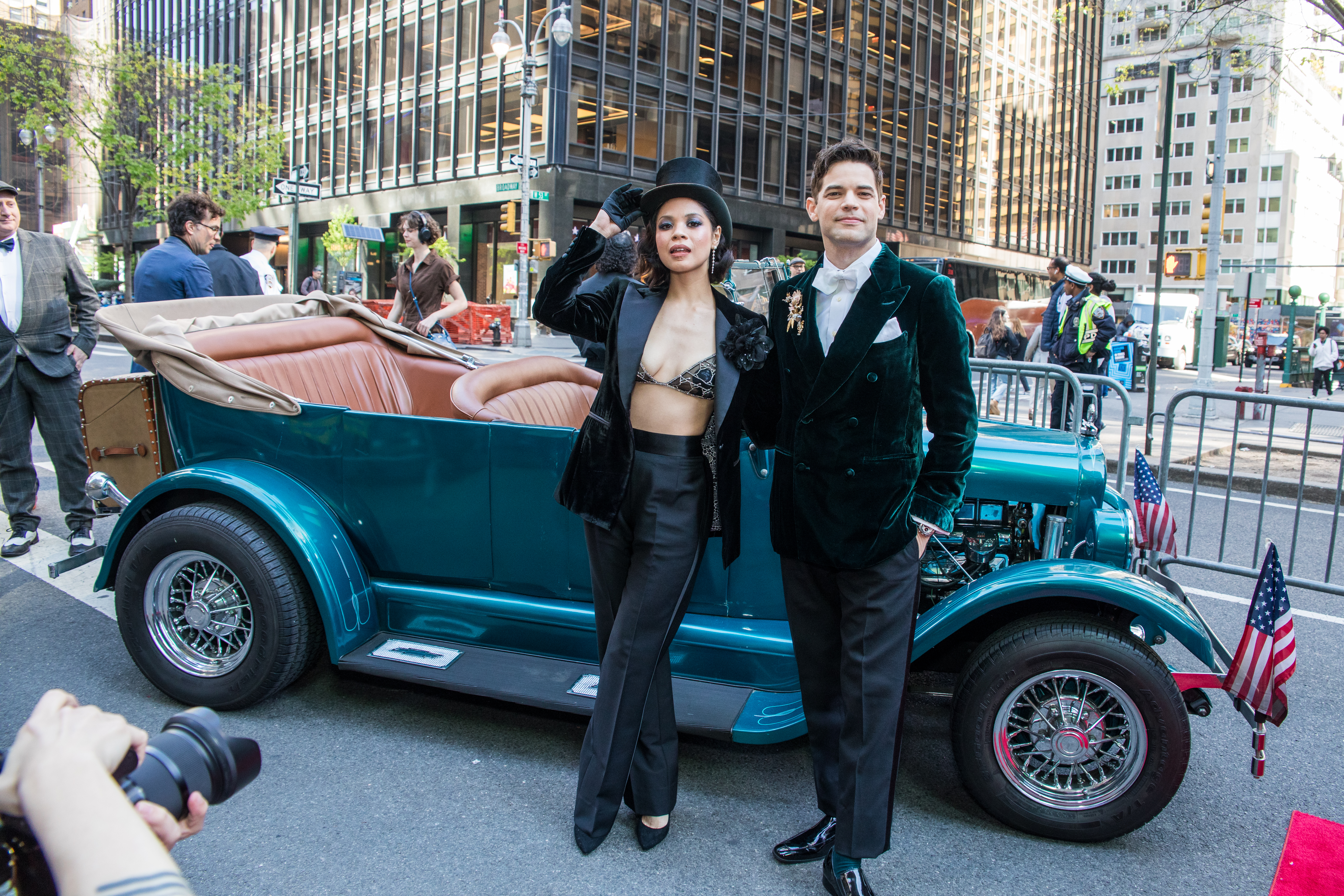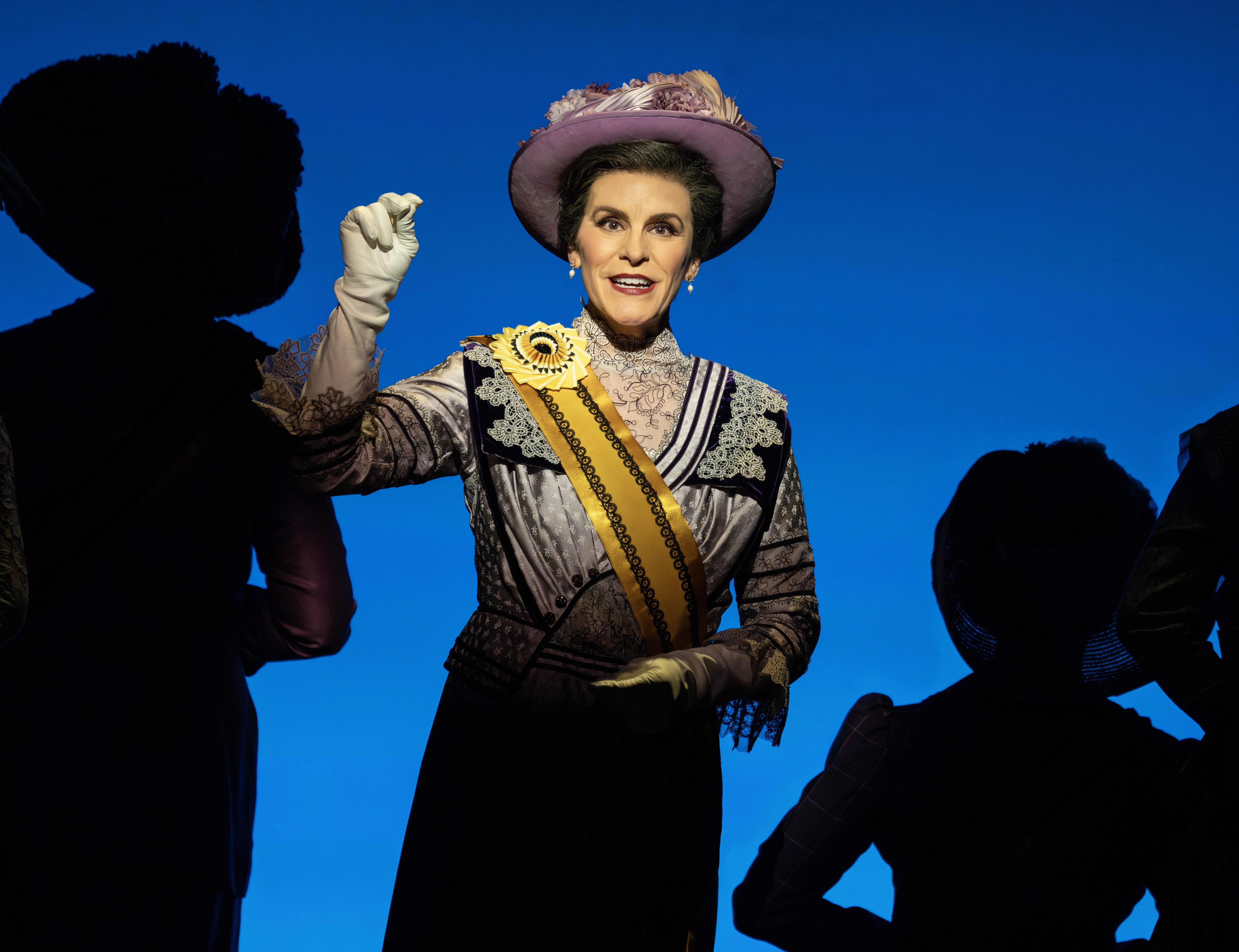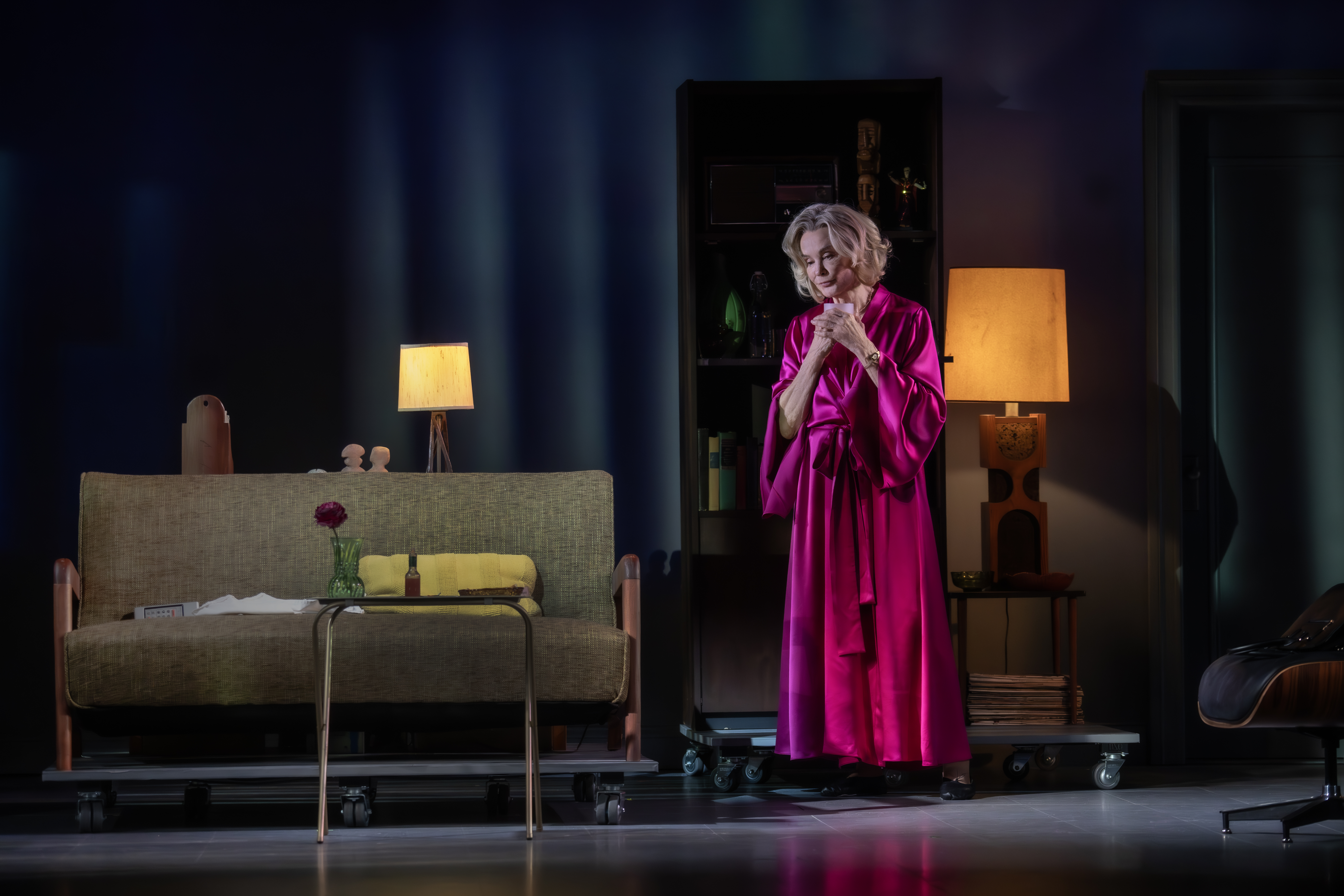All Over the Map

(© Michael Lamont)
With few exceptions, the George and Ira Gershwin musicals that yielded some of the brothers’ greatest songs are rarely revived. So the production of Tip-Toes that’s now on view at the Whitefire Theatre in Sherman Oaks, California is quite a noteworthy undertaking. The 1925 show, which has a book by Guy Bolton and Fred Thompson, tells the story of the title character and her two uncles, vaudevillians who travel to Palm Beach and pass themselves off as “swells” so Tip-Toes can snare a rich husband.
Director-choreographer William Mead notes that this production wouldn’t have been possible were it not for an amazing discovery 25 years ago. “Warner Bros. had rented a warehouse in Secaucus, New Jersey, and no one knew what was in it,” says Mead as he recounts an oft-told but still wondrous tale. “In 1982, they were about to get rid of the rental and dump whatever was in it, but someone went in and discovered that it was filled with trunks and trunks of original Gershwin materials — including the Tip-Toes orchestrations. Before that, there wasn’t any real sense of what this show sounded like.”
The score, which includes such songs as “Looking for a Boy,” “Sweet and Low-Down,” and “That Certain Feeling,” was restored for a 1998 Carnegie Hall concert; but the present staging, a collaborative endeavor of By George Productions and The Artists Legacy Project, is the first full production since the big find in Secaucus. “The show was done at Goodspeed in 1978 with Georgia Engel,” Mead says, “but they added songs from other shows, and they didn’t have the original materials to work from.” He feels that, similarly, “My One and Only and Crazy for You were not true Gershwin shows. They were concocted by other people. The Gershwins didn’t just write a bunch of songs and throw them into a script; they really tried to create an overall effect. So when you add numbers from other shows, you don’t have the true Gershwin touch somehow.”
Mead’s Tip-Toes isn’t an extravaganza by Broadway standards, but he feels that the show benefits from a more intimate, smaller-scale treatment. “We have an all-singing, all-dancing cast of 12 people,” he says. “In the old days, 24 chorus girls would come on and do kick-line dancing; we’ve tried to continue the plot by bringing the principals into those numbers, and we’ve really made an attempt to get to the heart of the show. When ’20s musicals are revived, they’re usually treated as camp, but I think there’s buried treasure in Tip-Toes. We’ve had seven weeks of rehearsal, and our production is really quite lavish for a 99-seat theater. I felt the show deserved that.”
— M.P.
*****************

Bowman Wright in A House With No Walls
(© Seth Rozin, InterAct Theatre Company)
From his office window in Philadelphia, Thomas Gibbons can see the Liberty Bell Pavilion, which caused quite a stir when it was built a few years ago because the structure rests upon the site of George Washington’s slave quarters. The president owned hundreds of slaves and kept nine in Philadelphia, the city that served as the nation’s capital prior to the seat of government being moved to the District of Columbia. This controversy inspired playwright Thomas Gibbons’ A House With No Walls, which is being presented this month in a rolling world-premiere by both InterAct Theatre Company in Philadelphia and Florida Stage.
While the play dramatizes the racially charged issues that arose during the construction of the pavilion, as well as the story of one of Washington’s slaves plotting her escape, Gibbons is quick to point out that the work is not a documentary. “I fictionalized certain basic elements of the plot,” he states, “and all of the characters, with two exceptions [slaves Ona and Austin Judge], are completely invented. One of the things I wanted to get around is portraying someone like Washington on stage, which is almost impossible. I thought it would be much more interesting to get a different perspective on him from two of his slaves.”
The present-day action centers on the conflict between Salif Camara and Cadence Lane. The former is an African-American community activist who, according to Gibbons, “demands that the existence of those slaves and the fact that they lived on this site needs to be commemorated in some way.” The latter is also African-American, but believes that it’s necessary to let go of the “mantle of victimhood” and that “African-Americans will only achieve the full equality that they are struggling for if they put slavery behind them.”
A House With No Walls is being billed as the third part in Gibbons’ “race trilogy,” which also includes Bee-luther-hatchee and Permanent Collection. The playwright remarks that, while he didn’t necessarily start out to pen such a trilogy, “I began to see that all of these plays were essentially different perspectives on the same central issue of slavery in American history and how it’s intertwined with identity. Each gives us a different window to look at that same basic dilemma.”
— D.B.
*****************

“Ever since people were huddled together around camp fires, they’ve been telling ghost stories about the ocean,” says Roberto Aguirre-Sacasa. The playwright now has made his own contribution to that genre. In The Muckle Man, which begins performances on January 25 at the City Theatre in Pittsburgh, a mysterious man with otherwordly powers washes up on the shores of Newfoundland. A marine biologist and his wife befriend the stranger, who is not what he seems to be.
“Originally,” says Aguirre-Sacasa, “the play started out as a much more traditional domestic drama about grief: Two parents lose one of their kids in a boating accident. But as I was working on it, I started reading a bunch of folktales of the sea and started thinking that these two elements could really come together in an exciting new way onstage. I often describe The Muckle Man as sort of like Rabbit Hole with ghosts because at its heart is a couple dealing with terrible loss and terrible grief, and they find themselves caught up in a folkloric thriller.”
If the plot sounds somewhat familiar, it may be because you saw Aguirre-Sacasa’s Based on a Totally True Story, which premiered at the Manhattan Theatre Club last year. The central character in that show is a playwright who adapts one of his works into a screenplay, and The Muckle Man was the prototype for the script within a script.
For the Pittsburgh production, Aguirre-Sacasa has made some substantial revisions — although not the ones that the playwright in Based on a Totally True Story was forced to make. In 2001, The Muckle Man had a non-Equity staging at the Source Theatre in Washington, D.C. that unexpectedly received several Helen Hayes nominations and a win for the actress in the lead role. “Ever since that time,” says the author, “I’ve wanted to give the play another chance, partly because I felt I hadn’t completely gotten all of it right. I’ve been doing rewrites in close collaboration with the director, Tracy Brigden, and all the other people working on this production. There’s a lot of mythology and the supernatural in it, and the shift I’ve made is to make the play more magical realism and less Night of the Living Dead.”
— D.B.












